Often times, there is a confusion and misconception among the motorcycle riders on what entails a bike servicing.
Most people will be content with engine oil change, greasing, air filter cleaning, and bike washing. And that’s what motorcycle servicing is for them.
However, that is absolutely not the case. Motorcycle servicing is a preventive maintenance of your motorcycle, examining almost all the bike components to ensure they are in the right working conditions.
So, here we are listing 27 things to be done while servicing your mtorocycle.
#1. Change the Engine Oil
This point is the most obvious one. Every time you go for motorcycle servicing, you should check the engine oil levels and preferably change the engine oil completely.
The frequency of oil change depends on the type of engine oil you are using in your motorcycle. If you are using a mineral oil, it is advisable to change the oil for every 2000 miles you travel. For semi-synthetic oil, the frequency is 5000 miles and for synthetic oil, it is 8000 miles.
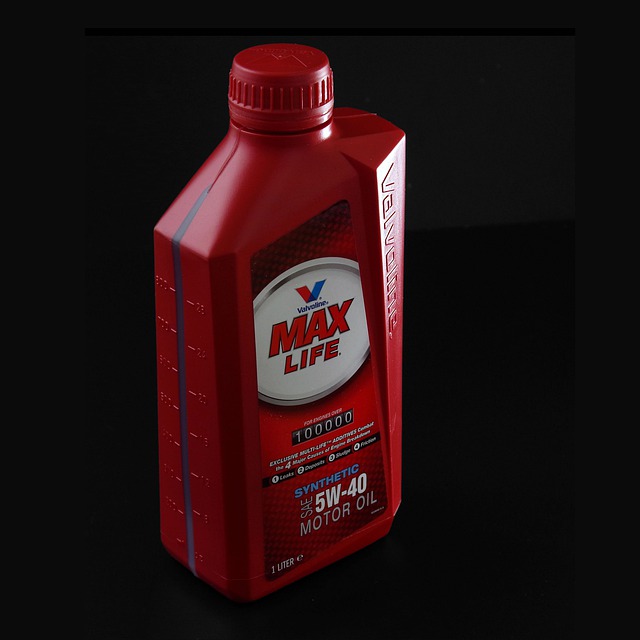
Since the frequency of servicing a motorcycle coincides with the changing of engine oil most of the times, it is a common occurrence to change the engine oil every time you take your motorcycle for servicing.
#2. Clean or Change the Oil Filter
Oil filter acts as the gatekeeper for engine oil to weed out the contamination present in the oil. Overtime, the contamination accumulates to reduce the effectiveness of the oil filter.
And that’s why, the oil filter needs to be checked and cleaned every time you are servicing the motorcycle. The contamination and the dirt accumulated over the filter needs to cleaned.
If, on the other hand, the dirt is too much on the oil filter, you might have to replace it with a new one. Continuing with a dirt clogged oil filter will result in poor lubrication and flow of oil, which in turn, can cause engine overheating.
If you are changing the oil filter, change the oil as well. That’s a best practice. You won’t want the new oil filter to deal with the sludge of the old engine oil.
#3. Clean the Oil Strainer
Oil strainer does not require as much maintenance as that of oil filter. However, for every 10,000 miles that your motorcycle runs, it is advisable to clean the oil strainer.
So, it is better to inspect and examine the oil strainer during every servicing. And if it is good condition, clean them in every alternate servicing cycles.
#4. Clean or Replace the Air Filter
Similar to oil filter, air filter acts as the gatekeeper for the air entering into the engine. The air filter blocks out the dirt and dust in the air that is entering the system.
As a result, the dirt starts to clog the air filter if left uncleaned for a long time. If there isn’t sufficient air entering the system, the air-fuel mixture entering the engine will be fuel rich. This will cause low mileage, backfiring and exhaust overheating in your motorcycle.
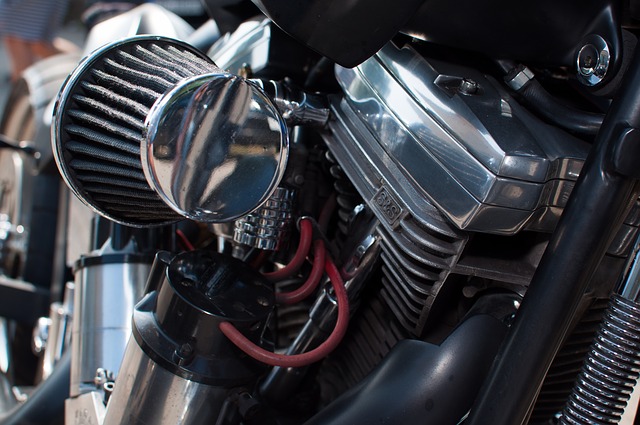
So, check the air filter and clean it. The air filter might need to be replaced if there is too much dirt on the filter which has resulted in its blackening. Other indicators for changing the air filter include too much of exhaust misfiring, power lags, and reduced mileage and horsepower.
#5. Inspect the condition of Brake shoe and Brake pads
The braking system is a vital component for your motorcycle to run smoothly. You need them the most to avoid any form of accidents or damages.
Brake shoe and brake pads, overtime with continuous usage, wears down with the brake pads no longer working as efficiently as required. Especially the brake pads – get wore down and thin out due to their continuous friction with the discs or wheel.

That’s why, during the servicing of the motorcycle, both the brake shoe and brake pads need to be inspected on their working condition. If they are still in good condition, there is no need for further action. However, on the other hand, if they are subpar, the parts must be replaced.
#6. Spark Plug Maintenance
Spark plug is an essential component of your motorcycle as it ignites the engine to power up your motorcycle to run. Any issues in the spark plug will eventually result in starting problems or acceleration problems.
The typical spark plug concerns are – dirt accumulation and masking, worn-out plug, incorrect type of plug used. All these will create problems in the ignition of the fuel inside the combustion chamber.
A worn-out or masked with dirt spark plug will not ignite the combustion chamber properly and this issue will cause poor acceleration in your motorcycle.
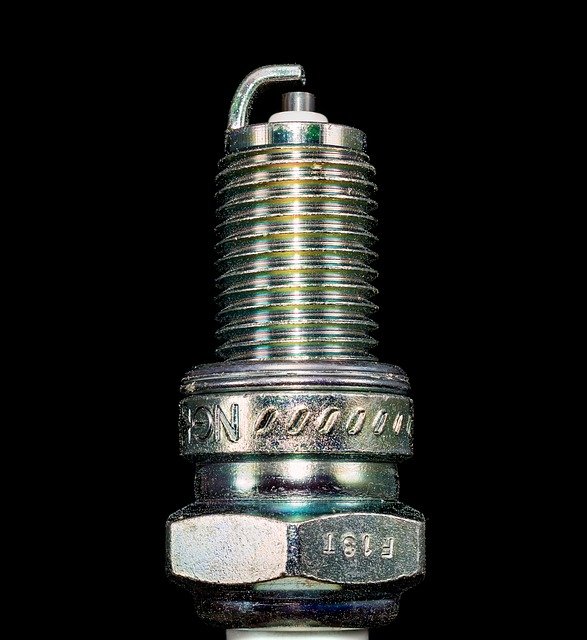
For these reasons, the spark plug needs to be checked for damage and deposits. If the deposits are recent, it can be cleaned off from the electrodes so that the spark is no more masked. However, if the deposits have accumulated strongly or has been damaged, you need to replace it with a new spark plug.
#7. Valve Tappet Clearance
This is one of the overlooked aspects while servicing a bike. Both the intake and exhaust valves are important for the engine functioning and performance.
The timing of these valves opening and the amount of time it is open – impacts the engine performance significantly. The intake valve controls the entry of fuel and air into the engine, whereas exhaust controls the exit of exhaust gases from the combustion chamber.
That’s the reason why in every servicing, you should set and adjust the tappet clearance of both these valves.
#8. Cleaning the Carburetor Float Chamber
If you have a carburetted motorcycle, then the next points are important for you with regards to the carburetor.
In carburetted motorcycles, carburetor is the component mixing the air and fuel to its optimum ratio and then transfers it to the engine. That’s why a clean carburetor float chamber is essential for an optimum air-fuel ratio to enter the engine.
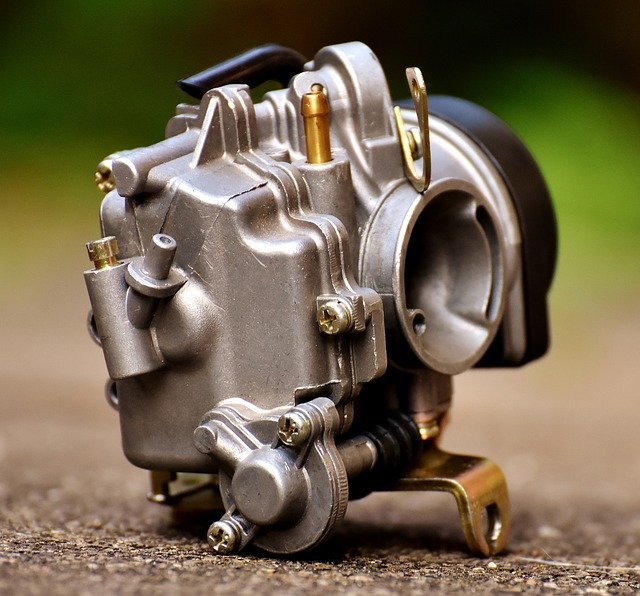
So, clean the carburetor float chamber for every 10,000 miles your motorcycle travels. It will be much better if you clean them during every servicing.
#9. Examine the Carburetor Sleeve
Along with cleaning the carburetor float chamber, you should also ask the servicing guy to check the carburetor sleeves.
If not for every servicing, at least in every alternative servicing of your motorcycle you should check these sleeves. If they are not in a good condition, replace the with new ones. It should not cost you much.
#10. Check for any cracks on Engine Breather Hose
Engine breather hose helps in removing the unwanted gases and pressure from the crankcase. This allows smooth functioning in the crankcase and less consumption of fuel to generate power.
Engine breather pipe are more like vent pipes allowing the gases and pressure go out from the crankcase. That’s why, it is important to check for any cracks and leaks in the engine breather hose while servicing your bike.
#11. Inspect Fuel pipe for any defects
Fuel pipe is the pipe through which the fuel passes from the fuel tank to the carburetor or fuel injector, which is then moved to the combustion chamber in the engine.
If there are any cracks or leaks in the fuel pipe, there will be fuel leakage leading to loss of fuel. Hence, inspect the fuel pipe for any defects. While a leak will often be easily noticeable due to the direct leakage, sometimes, there will be symptoms which can be prevented if examined earlier.
Also, replacing fuel pipe is not at all a costly affair if required. Much cheaper than the cost of fuel lost if leaked. So, check the fuel pipe for any symptom of cracks and leakages.
#12. Examine all Electrical Wiring
Electrical wirings are mostly missed during the motorcycle servicing. Make sure these electrical wirings, the harness, the circuit, and all the connections are thoroughly checked and tested by the servicing shop for your motorcycle.
#13. Check Battery Terminals
For modern motorcycles, battery performs a far more prominent role when compared to the bikes of yesteryears. Even for the motorcycle starting, you need your battery to charge the starter motor.
A dead battery in modern motorcycle means a dead motorcycle as well.
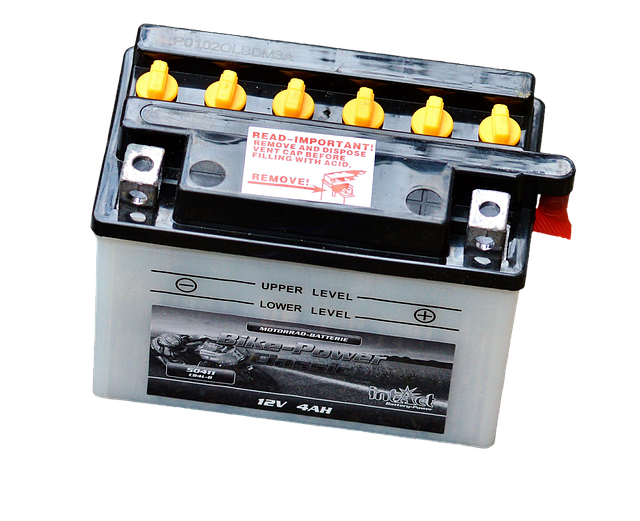
So, check the battery health, check the electrolyte levels if the battery is not maintenance free, clean the outer layer and terminals, and tighten the battery caps.
#14. Examine all Electrical Accessories
There are many electrical components in your battery that require constant supply of electricity. These components include – headlight, high beam and low beam, fuel ignition, injection and fuel pump, ECU, turn signal indicators, brake light, and horn.
All these accessories need to be examined whether they are in a perfect working condition or not and the electric circuit is fine.
#15. Tighten Starter Motor and Relay Connection
Starter motor connection and relay connection are vital for the motorcycle to start. Any loose connection, the electric self-starter will not work and you might have to rely on kickstart every time you want to start your motorcycle.
That’s why, check and tighten these connections every time you take your motorcycle for servicing.
#16. Lubricate, Adjust and Tighten the Chain
If the chain is loosened in your motorcycle, the resulting effects include – i) chain skipping over teeth, ii) jerky wheel movements, iii) chain coming off the sprocket, etc. All these are undesirable and a headache for the bike rider.
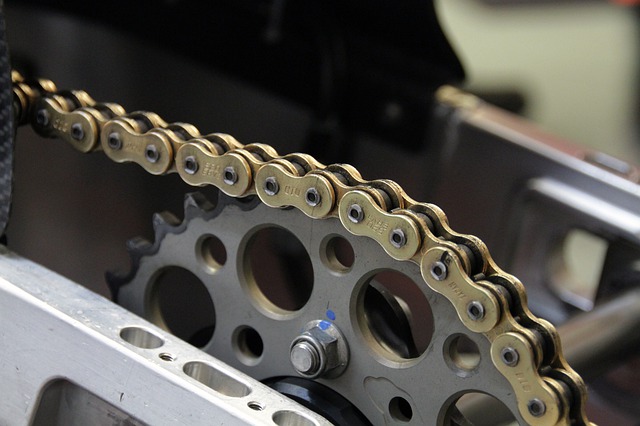
That’s why, you need to properly clean, lubricate regularly, and adjust the chain tension during every servicing of your motorcycle. This frequent diagnosing will make your chain to run smoothly and last longer without getting loosened up.
#17. Check Front Fork Oil
Front fork oil needs to be checked regularly and must be topped up if there is a shortage. Front fork oil is involved in the front suspension of the motorcycle.
As a result, the front suspension will not work smoothly if there is a shortage of the front fork oil. In addition, the front fork oil needs to be change at least on a yearly basis.
Motorcycle front fork oil should be changed every 10,000 miles (16,000 kilometers) or annually.
So, check the front fork oil and top it up if there is a shortage. And change the oil if it has been more than one year since the last change.
#18. Top Up Brake Fluid Levels
During every servicing of your motorcycle, the level of the braking fluid must be checked and examined. If the brake fluid is not to its maximum levels, it needs to be filled up.

So, check the brake fluid level and top it up if required. Similar to the front fork oil, the brake oil also needs to be changed at least on yearly basis. If you ride your motorcycle for longer distances frequently, consider changing the brake fluid every 6 months.
#19. Adjust Wheel Alignment
This is another most important aspect that is overlooked while servicing a motorcycle. The wheel alignment along with the spindle and nuts and bolts should be thoroughly inspected and adjusted as required.
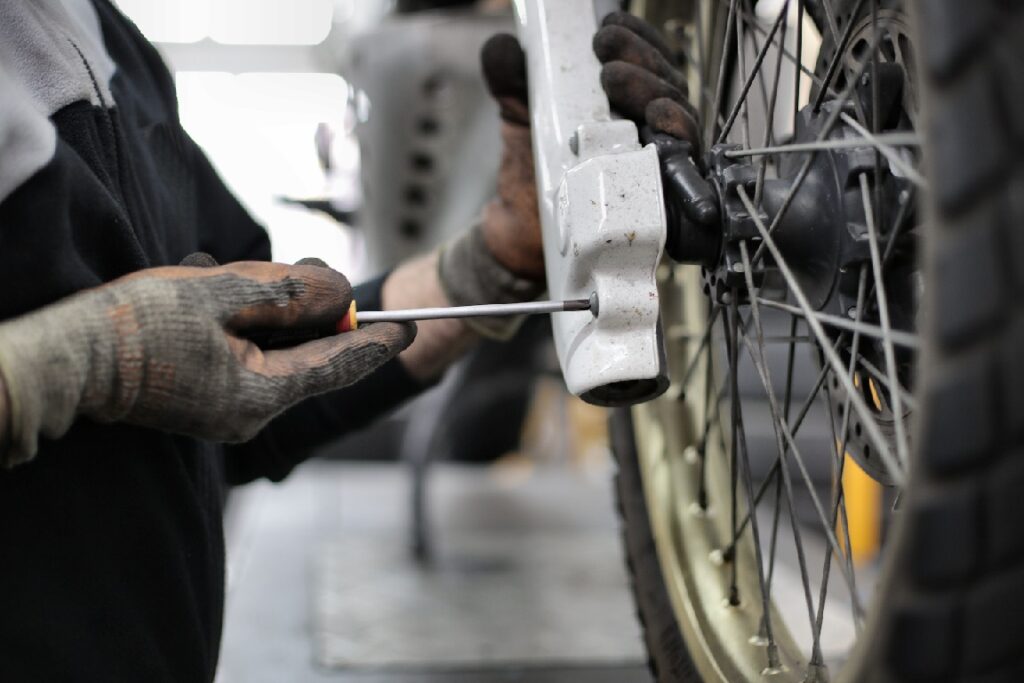
Ask your service shop to check the wheel alignment and inspect the spindle and adjust if there is any form of misalignment between the wheels.
#20. Maintain Optimum Tire Pressure
The recommended PSI for the tires will be explicitly mentioned in the bike’s user manual. The PSI recommendation will be separate for the front tire and the rear tire.
Usually, the recommended pressure for the rear tire will be higher than that of the front tire. So, ask the servicing guy to fill the air in tire to the required PSI for both the tires according to the motorcycle user manual.
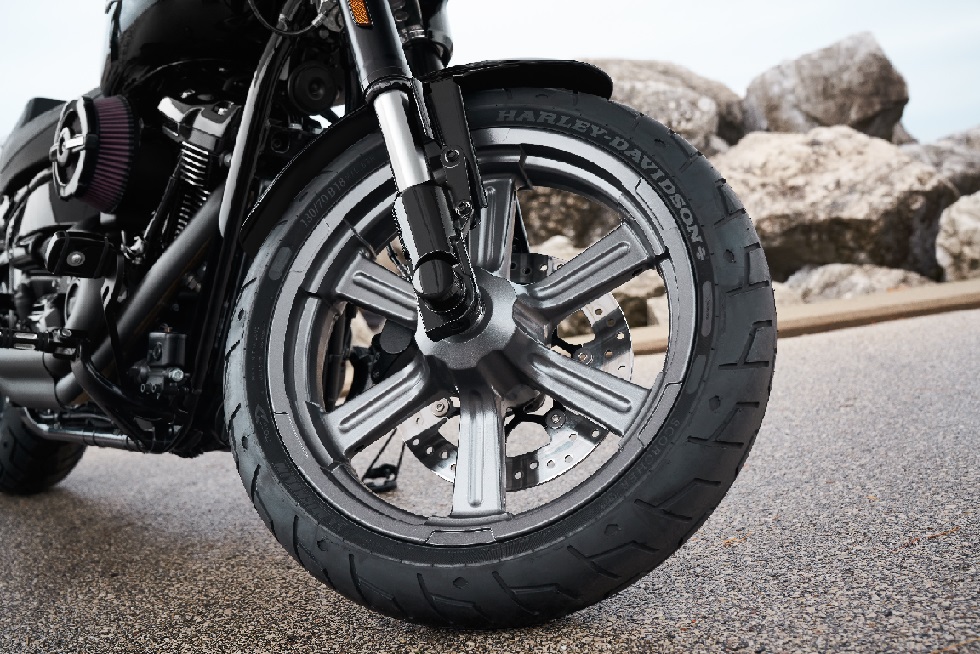
If the tire PSI is less than the required PSI, then the tire contact surface with the road will be higher. And when this contact area increases, the friction between the road and motorcycle increases as well.
The increased friction puts more stress on the engine. More power is required for the motorcycle to move when the friction is higher. Hence, more fuel will be consumed in the process, which in turn reduced the mileage of the motorcycle.
For these reasons, it is important for the motorcycle rider to maintain optimum pressure in both the front and rear tires. The mileage will be higher when these tires have required PSI in them.
#21. Check Accelerator, Clutch and Brake Cables
Next up, all the cables – the accelerator, clutch, and brake cables need to be examined on a superficial level at least to ensure that they are working in a proper condition.
In addition, these cables need to be tightened or loosened accordingly to provide suitable free play for the rider. The mantra is neither too tight nor too loose.
If the motorcycle is reasonably old, the cables also need to be checked for breakage, and replace them if necessary.
#22. Inspect and Adjust Headlight Focus
Due to repeated jerks and bumpy rides, the headlight focus often shifts in the motorcycle. That’s why, if you go for long rides regularly, or stay in a place where roads are not the smoothest, the headlight focus needs to be adjusted on a frequent basis.
So, whenever you go for a servicing of your bike, it is better to inspect and adjust the headlight focus on your motorcycle.
#23. Mirror Tightening and Adjustment
Sometimes, the mirror gets loosened up or won’t sit in the right position properly. The motorcycle rider will always be at a disadvantage with such inconvenience.
Therefore, the mirror needs to be tightened and adjusted accordingly since these components can be quite handy while riding in traffic and topsy-turvy roads.
#24. Carburetor Tuning If there are Mileage Problems
In carburetted motorcycles, carburetor is the component mixing air and fuel to provide an optimum air-fuel mix to the engine. If the mixture is not at the right proportion, then you will be faced with low mileage problems.

So, if you are facing low mileage problem in your motorcycle, ask the servicing shop to tune the carburetor as well.
If there is no mileage issue in your motorcycle, there is no need for carburetor tuning during the bike servicing.
#25. Check and Clean the Radiator Fins
If your motorcycle has a liquid cooling system, then the radiator needs to be checked and cleaned as well during the servicing.
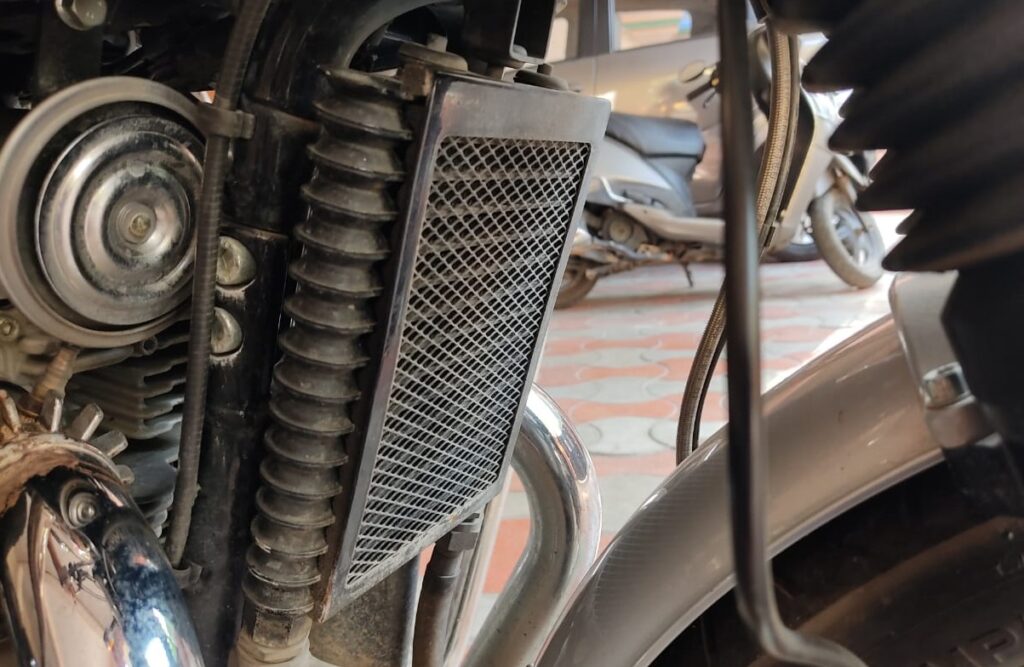
The radiator essentially cools down the liquid which has carried heat away from the engine components. If the radiator is not clean or not working properly, then the cooling efficiency will go down, thereby, causing engine and exhaust overheating.
That’s why, check and clean the radiator fins if you have a liquid cooling system in the motorcycle.
#26. Top Up or Replace the Liquid Coolant
Another thing to look for when your motorcycle has a liquid coolant system is the level of the coolant. The liquid coolant is the one that takes away the ehat from the engine components.
During every servicing, the coolant level should be checked and topped up if required. Also, if necessary, the liquid coolant should be replaced completely if it not working optimally.
#27. Washing and Polishing
This is something that service shop often does without the need to be told to. They clean and wash the motorcycle and polish as well.

And that’s the way it should be. A good wash and polishing, will always go a long way in preserving the paint on your motorcycle components. Ensure that the cleaning of the motorcycle has been done thoroughly by the service shop and that should suffice.
